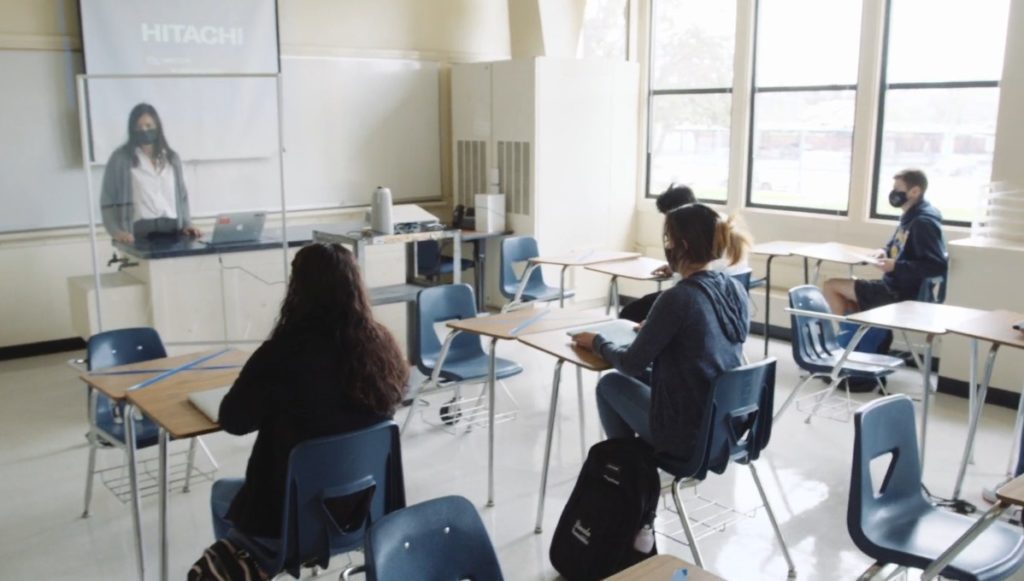After a year of distance learning, students returning to the classroom may experience anxiety and insecurity. What can parents do to help?
According to Dane Caldwell-Holden, director of student services for San Jose Unified School District, being back at school is going to look and feel different during the coronavirus pandemic.
“This is not typical school,” Caldwell-Holden said. “Kids are going to be six feet apart. They’re going to be in masks all day…it’s not like the first day of school where you pop back on campus, give hugs to everybody, play and have fun. We’re still in COVID.”
Parents aren’t going to be allowed on campus, he said. But at elementary schools, staff will meet students at drop-off so they feel safe. Students can mingle with each other during recess and lunch as long as they’re six feet apart and wear a mask, Caldwell-Holden said.
For students attending a new school, a campus tour can help alleviate stress. In February, 400 students who struggled with distance learning attended school in-person in small groups.
“They got to know new kids,” Caldwell-Holden said. “That’s what we anticipate for the students returning. It will be a little awkward the first day or two, but by the end of the day on Friday, it won’t be smooth sailing, but it will be good. We’re all excited.”
District spokesperson Jennifer Maddox said students who returned to campus seemed happy to be there.
“Whatever anxiety they had receded when they saw it was still is a school day,” Maddox said. “Although they can’t get close, they can still see their friends.”

On April 21, San Jose Unified School District will bring back 10,000 students from preschool through grade 12 for in-person learning. Although school capacity is limited to 50%, the district was able to accommodate about 98% of families who wanted their students to return with their current teacher.
Counselors will be deployed the first couple of weeks of school, and parents can request meetings for their children.
“Sometimes just a single conversation or two is enough to let them express what they’re feeling and get it out,” Maddox said, “and accept reassurance that it really is going to be okay.”
Michelle Humke, executive director of Almaden Valley Counseling Services, said it’s important to acknowledge the transition back to the classroom. She advises telling children, “This will be a big change, like moving from in-person school to distant learning was.”
Humke said parents should ask their children what their thoughts, concerns and fears are, and try to address them. Kids might feel anxious about reconnecting. Humke suggests having children verbalize how they made friends in the past to remind themselves how they did it.
“Help the child recognize some of the skills they’ve already learned,” Humke said. “Ask them how they handled returning to school after Christmas or summer vacation.”
Another transition for students is staying seated in a classroom for long periods of time. Unlike remote learning, they won’t be able to wander away to get a snack or take a break to play a video game.
“There will not be the same freedom,” Humke said. “There will be an adjustment to the expectations and restrictions of being in the classroom.”

Jocelynn Logan, a marriage and family therapist trainee at Almaden Valley Counseling Services, suggested parents help children focus on the positive, reminding them they will get to socialize and see their friends. She suggests having elementary students write down what they miss about attending class in person to help them look forward to being there. Middle and high school students can be reminded that they will get to socialize, see favorite teachers, get out of the house and have a little independence.
Wendi Mahaney-Gurahoo, a San Jose Unified School District board member and former special education preschool teacher, suggested reviewing the schedule, safety precautions and rules in advance. “Teachers are there to help kids transition, be safe and learn,” she said.
Janelle Bull, marriage and family therapist and founder of Anchor Psychology, said it’s okay to be honest with children about uncertainty.
“This is an uncertain time, and we don’t have all the answers,” Bull said. “Being okay with not knowing is key for transitioning.”
Parents also need to “embrace the strange” and prepare kids for what to expect, including everyone wearing masks and tape on the ground showing where to stand. Bull said to remind children the pandemic is temporary.
“It’s important to tell kids it will not be like this forever,” she said. “Ask them to see how long they can be flexible.”
Children like routine, and Bull said it will help lower anxiety if parents act consistently and predictably.
“We all need to validate we’re all doing the best we can with what we have, including teachers and administrators,” Bull said. “We need to give each other some grace.”
Contact Lorraine Gabbert at [email protected].



Leave a Reply
You must be logged in to post a comment.